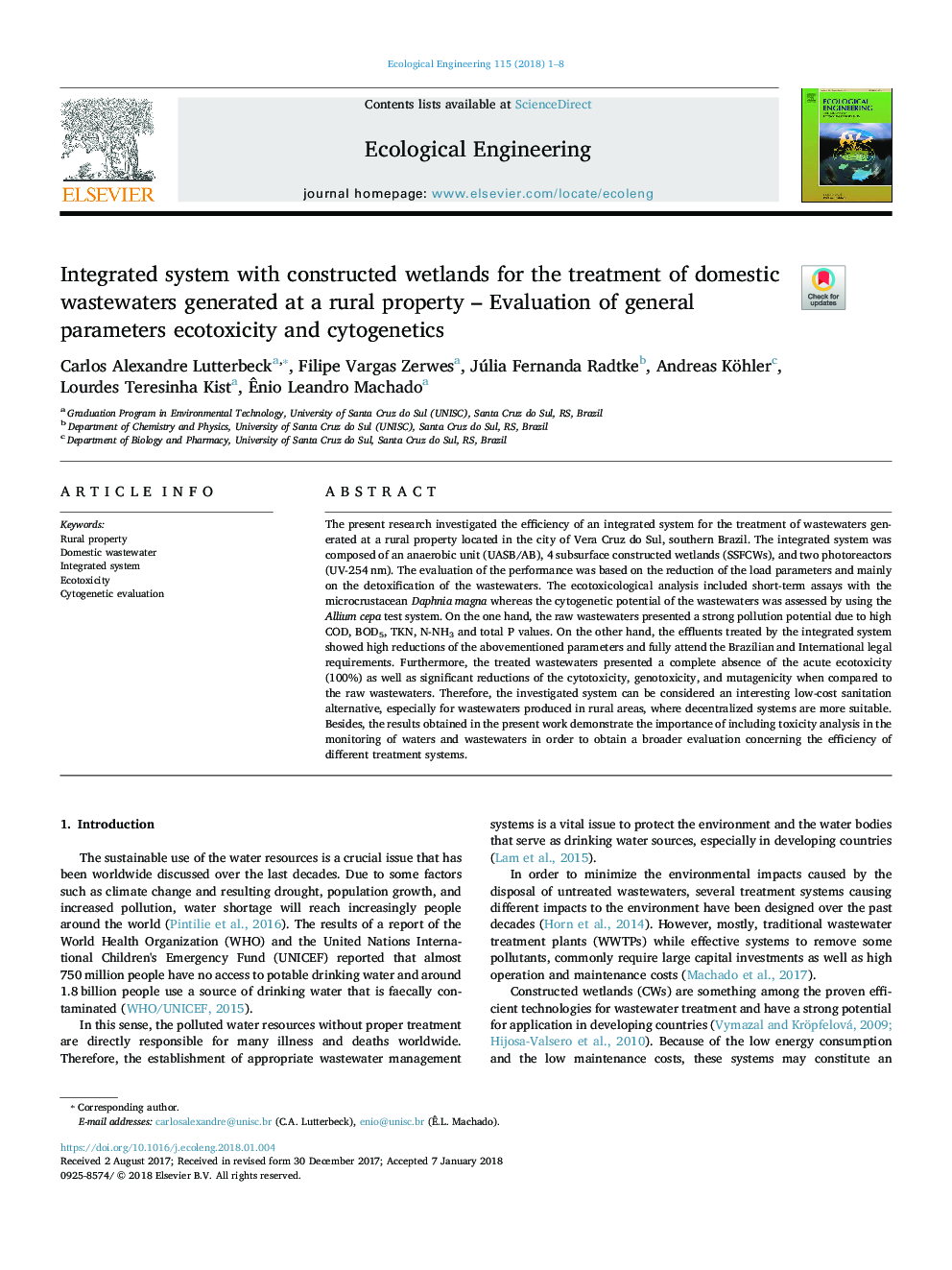| Article ID | Journal | Published Year | Pages | File Type |
|---|---|---|---|---|
| 8847941 | Ecological Engineering | 2018 | 8 Pages |
Abstract
The present research investigated the efficiency of an integrated system for the treatment of wastewaters generated at a rural property located in the city of Vera Cruz do Sul, southern Brazil. The integrated system was composed of an anaerobic unit (UASB/AB), 4 subsurface constructed wetlands (SSFCWs), and two photoreactors (UV-254â¯nm). The evaluation of the performance was based on the reduction of the load parameters and mainly on the detoxification of the wastewaters. The ecotoxicological analysis included short-term assays with the microcrustacean Daphnia magna whereas the cytogenetic potential of the wastewaters was assessed by using the Allium cepa test system. On the one hand, the raw wastewaters presented a strong pollution potential due to high COD, BOD5, TKN, N-NH3 and total P values. On the other hand, the effluents treated by the integrated system showed high reductions of the abovementioned parameters and fully attend the Brazilian and International legal requirements. Furthermore, the treated wastewaters presented a complete absence of the acute ecotoxicity (100%) as well as significant reductions of the cytotoxicity, genotoxicity, and mutagenicity when compared to the raw wastewaters. Therefore, the investigated system can be considered an interesting low-cost sanitation alternative, especially for wastewaters produced in rural areas, where decentralized systems are more suitable. Besides, the results obtained in the present work demonstrate the importance of including toxicity analysis in the monitoring of waters and wastewaters in order to obtain a broader evaluation concerning the efficiency of different treatment systems.
Related Topics
Life Sciences
Agricultural and Biological Sciences
Ecology, Evolution, Behavior and Systematics
Authors
Carlos Alexandre Lutterbeck, Filipe Vargas Zerwes, Júlia Fernanda Radtke, Andreas Köhler, Lourdes Teresinha Kist, Ãnio Leandro Machado,
